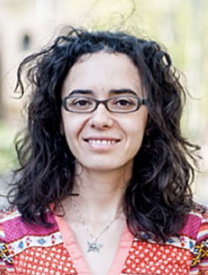CCB Colloquium: Eleni Katifori, Ph.D. (University of Pennsylvania)
 Speaker: Eleni Katifori, Ph.D., Associate Professor, University of Pennsylvania
Speaker: Eleni Katifori, Ph.D., Associate Professor, University of Pennsylvania
Topic: Collective motion of confined biasedswimmers: magnetotactic bacteria in channels and spheres
All organisms larger than the size of a nematode are endowed with flow networks of varying complexity that facilitate nutrient distribution, waste removal, and communication. Life without these networks would be inconceivable. The variability in architecture and topology of flow networks poses some very interesting questions. Why are some networks hierarchical and others are not? When is it beneficial to provide the power to overcome viscous dissipation and propel the fluid using a single, centralized pump, versus decentralized, peristaltic pumping? When does a flow network need many valves, and when just a few? Learning about these living networks will propel our understanding of the constrains and challenges that macroscopic life faces, and the ingenious solutions that biology finds to overcome them. Inspired by some of these questions, in this talk we will explore the form and function of biological flow networks when dynamics plays a significant role in their function. First, we present some theoretical and computational models that discuss how mechanical information is propagated in the arteriovenous vasculature where the vessels are compliant, and what this means about system responsiveness to changes in the frequency of the heartbeat. Then, we will investigate how flow climbs pressure gradients, as in the venous vasculature or the lymphatic systems, and the role of peristaltic pumping and valves. Last, we will draw inspiration and learn from reversible flower opening, and the potential role of vasculature in determining the spatiotemporal patterns of water storage in the petal. We will present some computational models that couple thin shell mechanics and fluid flow, and show how, in a simple thin material one can generate complex deformation pathways that are controlled by the vascular topology.